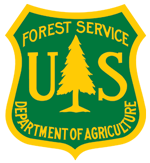Landscape Partnership Resources Library
Systematic Conservation Planning
The realization of conservation goals requires strategies for managing whole landscapes including areas allocated to both production and protection. Reserves alone are not adequate for nature conservation but they are the cornerstone on which regional strategies are built. Reserves have two main roles. They should sample or represent the biodiversity of each region and they should separate this biodiversity from processes that threaten its persistence. Existing reserve systems throughout the world contain a biased sample of biodiversity, usually that of remote places and other areas that are unsuitable for commercial activities. A more systematic approach to locating and designing reserves has been evolving and this approach will need to be implemented if a large proportion of today’s biodiversity is to exist in a future of increasing numbers of people and their demands on natural resources.
Planning for Biodiversity Conservation: Putting Conservation Science into Practice
A seven-step framework for developing regional plans to conserve biological diversity, based upon principles of conservation biology and Ecology, is being used extensively by The Nature Conservancy to identify priority areas for conservation.
Incorporating Climate Change into Systematic Conservation Planning
The principles of systematic conservation planning are now widely used by governments and non-government organizations alike to develop biodiversity conservation plans for countries, states, regions, and ecoregions. Many of the species and ecosystems these plans were designed to conserve are now being affected by climate change, and there is a critical need to incorporate new and complementary approaches into these plans that will aid species and ecosystems in adjusting to potential climate change impacts. We propose five approaches to climate change adaptation that can be integrated into existing or new plans.
Conserving the Stage: Climate Change and the Geophysical Underpinnings of Species Diversity
Conservationists have proposed methods for adapting to climate change that assume species distributions are primarily explained by climate variables. The key idea is to use the understanding of species-climate relationships to map corridors and to identify regions of faunal stability or high species turnover. An alternative approach is to adopt an evolutionary timescale and ask ultimately what factors control total diversity, so that over the long run the major drivers of total species richness can be protected. Within a single climatic region, the temperate area encompassing all of the Northeastern U.S. and Maritime Canada, we hypothesized that geologic factors may take precedence over climate in explaining diversity patterns. If geophysical diversity does drive regional diversity, then conserving geophysical settings may offer an approach to conservation that protects diversity under both current and future climates.
Conservation Planning in a Changing World
Conservation planning is the process of locating, configuring, implementing and maintaining areas that are managed to promote the persistence of biodiversity and other natural values. Conservation planning is inherently spatial. The science behind it has solved important spatial problems and increasingly influenced practice. To be effective, however, conservation planning must deal better with two types of change. First, biodiversity is not static in time or space but generated and maintained by natural processes. Second, humans are altering the planet in diverse ways at ever faster rates.
How to Use the Expertise Database PDF Download
Download the How to Use the Expertise Database tutorial here.
Expertise Database Fields for Offline Submission
Please download the document and then check Enable Editing at top of page. Then check the appropriate box for your expertise or make text bold. Once completed, email back to the Appalachian LCC at communications@applcc.org. Thanks.
Full Proposal - Cave & Karst Classification and Mapping
As stated in the RFP, “developing a consistent classification system for karst habitats is a foundational need for this unique habitat type,” but not without familiar antecedents. This proposal builds on existing knowledge in order to provide context for the proposed work described in the next section, following the structure in the RFP.
Aquatic Ecological Flows Phase 1 Report
The 1st phase of the Aquatic Ecological Flows project involved reviewing existing tools and gathering available data within the project area on hydrologic and ecological flow model(s) that would be suitable for the region. This Report details that work.
Stream Impacts from Water Withdrawals Phase 1 Report
The 1st phase of this research project involved reviewing existing tools and gathering available data within the project area on hydrologic and ecological flow model(s) that would be suitable for the region.
TOT Comments for Q2, 2013 Quarterly Report
Reviews on Progress Report for Stream Classification Project.
Progress Report for Quarter 2, 2013 Stream Classification
Report from vendor The Nature Conservancy on Stream Classification Project.
Ecological Flows 2nd Quarter Report, 2013
Report from Vendors of the Aquatic Ecologic Flows Project.
Progress Report
Report from vendor The Nature Conservancy for Stream Classification Project for Q1, 2013.
Progress Report
Report from vendor The Nature Conservancy for Stream Classification Project in 4th Quarter, 2012.


























